Are you torn between long-distance runs and intense weightlifting for your exercise routine? The good news is, you don’t have to choose just one! Exercise generally falls into two categories – aerobic and anaerobic – and each has its unique benefits. Understanding these differences between Aerobic vs. Anaerobic Exercise can help you create a well-rounded fitness plan tailored to your goals. The terms “aerobic” and “anaerobic” often come up in fitness discussions, but what do they mean? Let’s explore the specifics of both types of exercise, their benefits, and differences, and how you can effectively incorporate both into your fitness journey.
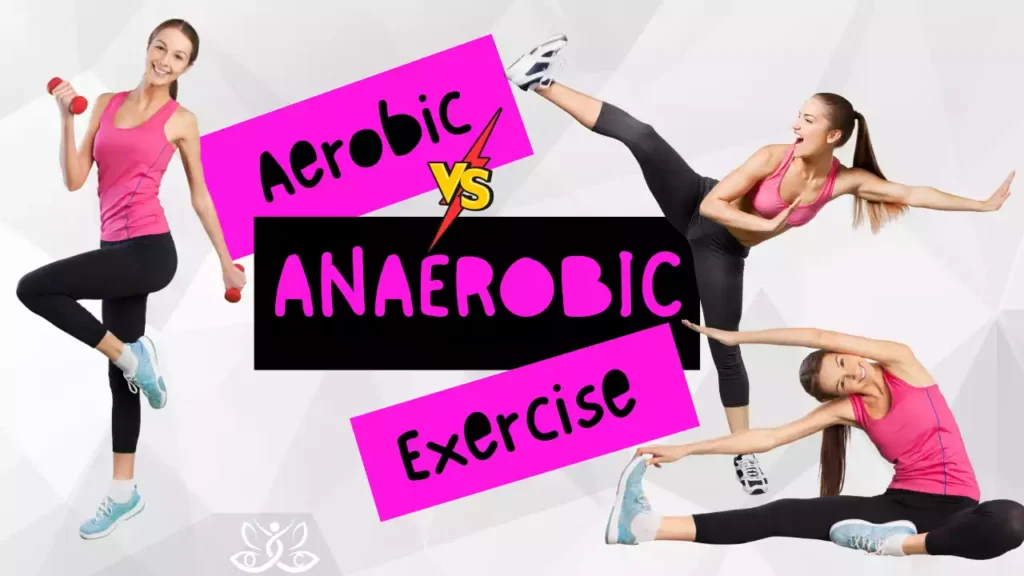
Aerobic vs Anaerobic Exercise: A Comprehensive Overview
Aerobic Exercise: The Oxygen Advantage
Aerobic exercise, also known as “cardio,” gets its name from the Greek words for “air” and “life.” This aptly describes this type of exercise, where your body uses oxygen to create energy. Aerobic activities are typically sustained for longer durations (think 30 minutes or more) at a moderate intensity. You’ll be breathing harder, but you should still be able to hold a conversation.
Benefits of Aerobic Exercise:
Boosts cardiovascular health:
- A strong heart is essential for overall health. Aerobic exercise strengthens your heart muscle, improves blood flow, and lowers your risk of heart disease.
Burns calories and fat:
- Aerobic exercise is a fantastic calorie burner, helping you manage your weight and maintain a healthy body composition.
Increases lung capacity:
- As you breathe harder during aerobic exercise, your lungs become more efficient at taking in oxygen and delivering it to your muscles.
Improves mood and reduces stress:
- Exercise releases endorphins, which have mood-boosting and stress-reducing effects.
Examples of Aerobic Activities:
Brisk Walking
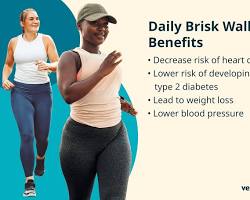
- A great way to get started with exercise, especially for beginners.
- It is a low-impact activity that is easy on your joints.
- Brisk walking can help you burn calories, improve your cardiovascular health, and strengthen your legs.
- Aim for at least 30 minutes of brisk walking most days of the week.
Running

- A more vigorous form of exercise than brisk walking.
- It is a great way to burn calories and improve your cardiovascular health.
- Running can also help you build muscle and bone strength.
- If you are new to running, start slowly and gradually increase the distance and intensity of your runs.
Swimming

- A low-impact exercise that is easy on your joints.
- Swimming is a great way to get a full-body workout.
- It can help you burn calories, improve your cardiovascular health, and build muscle strength.
- Swimming is also a great way to cool down on a hot day.
Cycling
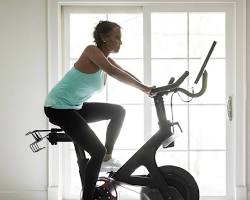
- A great way to get some exercise outdoors.
- Cycling is a low-impact activity that is easy on your joints.
- It can help you burn calories, improve your cardiovascular health, and strengthen your legs.
- Cycling is also a great way to commute to work or school.
Dancing
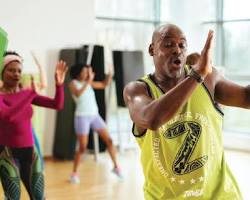
- A fun way to get some exercise.
- Dancing can help you burn calories, improve your cardiovascular health, and increase your coordination.
- There are many different styles of dance to choose from, so you can find one that you enjoy.
Playing Tennis (Doubles)
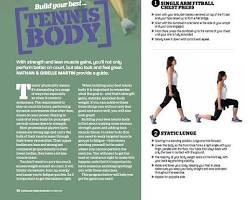
- A great way to get some exercise and socialize with friends.
- Playing tennis can help you burn calories, improve your cardiovascular health, and increase your coordination.
- It is also a great way to improve your reflexes and agility.
These are just a few of the many benefits of exercise. When choosing an exercise, it is important to find something that you enjoy and that you can stick with. Aim for at least 30 minutes of moderate-intensity exercise most days of the week.
Anaerobic Exercise: Short Bursts, Big Results
Anaerobic exercise, on the other hand, means “without air.” During these intense activities, your body doesn’t have enough oxygen to keep up with the energy demands. Instead, it relies on stored energy sources in your muscles to fuel short bursts of high-intensity activity. You’ll be breathing heavily and exertion will make conversation difficult.
Benefits of Anaerobic Exercise:
Builds muscle strength and power:
- Anaerobic exercise, particularly weight training and sprinting, helps build muscle mass and strength, which improves your overall fitness and metabolism.
Boosts bone density:
- Strong muscles put positive stress on your bones, promoting bone density and reducing the risk of osteoporosis.
Improves anaerobic capacity:
- Regular anaerobic exercise increases your body’s ability to produce energy without oxygen, allowing you to perform at higher intensities for longer durations.
Examples of Anaerobic Activities:
Sprinting

- Short bursts of intense activity that push your body to its limits.
- Improves anaerobic capacity, allowing you to perform at high intensities for brief periods.
- Builds leg power and explosiveness.
- Examples: Short sprints (50-100 meters), and hill sprints.
Weightlifting (Heavy Weights, Low Repetitions)
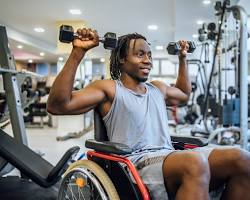
- Uses heavy weights with fewer repetitions (typically 1-6 reps).
- Targets muscle growth and strength development.
- Increases bone density and improves overall body composition.
- Examples: Squats with heavy weights, deadlifts, and bench press with heavy weight.
HIIT (High-Intensity Interval Training)

- Alternates between short bursts of intense activity and rest periods.
- Improves both aerobic and anaerobic capacity by pushing your body to work hard and then recover quickly.
- Burns a significant amount of calories in a short amount of time.
- Examples: Sprints followed by walking rest periods, jumping jacks followed by rest, burpees with rest.
Plyometric Exercises (Jumping Jacks, Box Jumps)

- Explosive movements that involve jumping and landing.
- Develops power, agility, and coordination.
- Improves athletic performance and helps build strong muscles.
- Examples: Jumping jacks, box jumps, squat jumps, and depth jumps (advanced).
Remember:
- These exercises are high-intensity and can be demanding on your body.
- It’s important to warm up properly before starting and cool down afterward.
- Listen to your body and take rest days when needed.
- Consider consulting a trainer for proper form guidance, especially with weightlifting and plyometric exercises.
Key Differences Between Aerobic vs. Anaerobic Exercise
Energy Systems Used
- Aerobic exercise relies on oxygen to produce energy, while anaerobic exercise uses energy stored in muscles.
- This fundamental difference affects how long and intensely you can perform each type of exercise.
Duration and Intensity
- Aerobic exercises are generally performed at a moderate intensity for extended periods, such as a 30-minute jog.
- In contrast, anaerobic exercises are high-intensity and short-duration, like a 100-meter sprint.
Physiological Effects
- Aerobic exercise primarily benefits the cardiovascular system and endurance, whereas anaerobic exercise focuses on muscle strength and power.
- Both types of exercise have unique physiological impacts that contribute to overall fitness.
How to Choose Between Aerobic vs. Anaerobic Exercise
Personal Fitness Goals
- Your fitness goals play a crucial role in determining which type of exercise to prioritize.
- If you’re aiming to improve cardiovascular health and endurance, aerobic exercise is ideal.
- For muscle building and strength, focus on anaerobic exercise.
Current Fitness Level
- Consider your current fitness level when choosing exercises.
- Beginners might start with more aerobic activities to build a fitness foundation before incorporating anaerobic workouts.
Preferences and Enjoyment
- Enjoyment is key to maintaining a consistent exercise routine.
- Choose activities you enjoy, whether that’s a dance class for aerobic exercise or a weightlifting session for anaerobic exercise.
Combining Aerobic vs. Anaerobic Exercise
Importance of Balance
- A well-rounded fitness routine includes both aerobic and anaerobic exercises.
- This balance ensures you’re improving both cardiovascular health and muscle strength.
Sample Workout Plans
Beginner:
- 3 days of moderate aerobic exercise (e.g., brisk walking) and 2 days of light anaerobic exercise (e.g., bodyweight exercises).
Intermediate:
- 3 days of aerobic exercise (e.g., running) and 3 days of anaerobic exercise (e.g., weight lifting).
Advanced:
- 4 days of high-intensity aerobic exercise (e.g., cycling) and 4 days of anaerobic exercise (e.g., HIIT).
Common Myths About Aerobic vs. Anaerobic Exercise
Myth 1: Aerobic Exercise is Better for Weight Loss
- While aerobic exercise burns more calories during the activity, anaerobic exercise increases your resting metabolic rate, which can be more effective for long-term weight loss.
Myth 2: Anaerobic Exercise Makes You Bulky
- Many people, especially women, avoid anaerobic exercise for fear of becoming bulky. However, building muscle requires significant effort and specific training; most people will simply become more toned and strong.
Myth 3: You Should Only Do One Type of Exercise
- Both aerobic and anaerobic exercises offer unique benefits. A combination of both is essential for a balanced fitness routine and optimal health.
Aerobic Exercise for Different Age Groups
Children
- Kids benefit from aerobic exercises like playing tag, swimming, and cycling. These activities help develop coordination and cardiovascular health.
Adults
- For adults, activities like running, dancing, or hiking can provide excellent aerobic workouts. These exercises help maintain cardiovascular health and manage stress.
Seniors
- Seniors should focus on low-impact aerobic exercises such as walking, swimming, or tai chi. These activities help maintain mobility and cardiovascular health without putting excessive strain on the joints.
Safety Tips for Aerobic Exercise
Warm-up and Cool-down
- Always start with a warm-up to prepare your body and end with a cool-down to gradually lower your heart rate.
Proper Form
- Maintaining proper form during aerobic exercise is crucial to prevent injuries. Focus on your posture and movements.
Hydration
- Stay hydrated before, during, and after aerobic exercise to prevent dehydration and maintain performance.
Anaerobic Exercise for Different Age Groups
Children
- Children can engage in anaerobic activities like sprinting, jumping rope, or playing sports. These exercises help build strength and improve coordination.
Adults
- Adults can benefit from weight lifting, HIIT, or resistance training. These activities build muscle, increase metabolism, and improve overall strength.
Seniors
- Seniors should focus on light resistance training, such as using resistance bands or light weights. These exercises help maintain muscle mass and bone density.
Safety Tips for Anaerobic Exercise
Proper Technique
- Using the correct technique is essential to avoid injuries. Consider working with a trainer to learn the proper form.
Using Appropriate Weights
- Start with lighter weights and gradually increase as you build strength. Using weights that are too heavy can lead to injuries.
Recovery
- Allow adequate recovery time between anaerobic workouts to prevent overtraining and muscle fatigue.
Tracking Progress in Aerobic vs. Anaerobic Exercise
Tools and Apps
- Use fitness apps and wearable devices to track your workouts, monitor your progress, and stay motivated.
Setting Realistic Goals
- Set achievable goals for both aerobic and anaerobic exercises. This helps maintain motivation and track progress.
Monitoring Improvements
- Regularly assess your fitness levels, such as measuring your heart rate, strength, and endurance to monitor improvements.
Combining Aerobic and Anaerobic Exercise
For optimal fitness, consider incorporating both aerobic and anaerobic exercise into your routine. Aerobic exercise improves your cardiovascular health, the foundation for all physical activity. Anaerobic exercise builds strength and power, which can enhance your performance in both aerobic and daily activities.
Here’s a sample weekly routine that incorporates both types:
- Monday: Aerobic (brisk walking for 45 minutes)
- Tuesday: Strength training (focus on lower body)
- Wednesday: Rest or active recovery (yoga or light stretching)
- Thursday: Aerobic (swimming for 30 minutes)
- Friday: HIIT (sprints and bodyweight exercises)
- Weekend: Rest or active recovery (hiking or leisurely biking)
Remember, this is just a sample. You can adjust the intensity, duration, and frequency of your workouts based on your fitness level and goals. It’s always best to consult with a doctor before starting a new exercise program.
Diets for Aerobic and Anaerobic Exercise
While both aerobic and anaerobic exercise offer distinct benefits, they also have different nutritional demands. Here’s a breakdown of how to tailor your diet to optimize your workouts:
Aerobic Exercise:
Focus: Long-lasting energy and endurance
Macronutrients:
Carbohydrates:
- Carbohydrates (50-60%) are your primary fuel source during aerobic exercise. Choose complex carbs like whole grains, fruits, and vegetables for sustained energy release.
Protein:
- Protein (20-30%) is crucial for muscle repair and recovery after exercise. Lean protein sources like chicken, fish, beans, and lentils are ideal.
Healthy Fats:
- Healthy Fats (20-30%) provide sustained energy and support hormone production. Opt for healthy fats from sources like olive oil, avocado, nuts, and seeds.
Sample Pre-Workout Meal (30-60 minutes before):
- Banana with peanut butter
- Oatmeal with berries and nuts
- Whole-wheat toast with eggs and avocado
Sample Post-Workout Meal (within 1 hour):
- Chicken breast with brown rice and roasted vegetables
- Salmon with quinoa and steamed broccoli
- Lentil soup with whole-grain bread
Anaerobic Exercise:
Focus: Short bursts of power and muscle-building
Macronutrients:
Protein:
- Protein (30-40%) takes center stage for muscle growth and repair. Include a good protein source in every meal and consider a protein shake post-workout.
Carbohydrates:
- Carbohydrates (40-50%) still play a role, providing readily available energy for high-intensity activities. Focus on moderate-glycemic carbs like sweet potatoes or whole-wheat pasta.
Healthy Fats:
- Healthy Fats (20-30%) support overall health and hormone production. Choose healthy fats from the sources mentioned earlier.
Sample Pre-Workout Meal (1-2 hours before):
- Greek yogurt with berries and granola
- Chicken breast with brown rice and vegetables
- Protein smoothie with fruits and spinach
Sample Post-Workout Meal (within 30 minutes):
- Salmon with quinoa and roasted vegetables
- Turkey burger on a whole-wheat bun with sweet potato fries
- Chicken stir-fry with brown rice and vegetables, followed by a protein shake
General Tips:
- Hydration is key: Drink plenty of water throughout the day, especially before, during, and after exercise.
- Don’t skip meals: Aim for regular meals and snacks to keep your energy levels consistent.
- Listen to your body: Adjust your portion sizes based on your individual needs and exercise intensity.
- Prioritize whole foods: Focus on fresh, unprocessed foods for optimal nutrition.
- Consult a registered dietitian: For personalized dietary advice tailored to your specific goals and health conditions.
Remember, these are general guidelines. Experiment and find what works best for you to fuel your workouts and optimize your fitness journey!
Conclusion
Understanding the differences between Aerobic vs. Anaerobic Exercise can help you create a balanced and effective fitness routine. By incorporating both types of exercise, you can enjoy the unique benefits each offers, from improved cardiovascular health to increased muscle strength. Remember, the best exercise is the one you enjoy and can stick with in the long run. So, get moving and start mixing it up!
FAQs
Q. What is the best type of exercise for overall health?
A. Both aerobic and anaerobic exercises are essential for overall health. A combination of the two provides the best results.
Q. Can I do aerobic and anaerobic exercises on the same day?
A. Yes, you can combine both types of exercise in a single workout session or on the same day. Just ensure you’re not overtraining and listen to your body.
Q. How often should I do aerobic exercise?
A. Aim for at least 150 minutes of moderate aerobic exercise or 75 minutes of vigorous aerobic activity per week.
Q. How often should I do anaerobic exercise?
A. Include anaerobic exercise in your routine 2-3 times per week, allowing for rest days between sessions to enable muscle recovery.
Q. Which exercise is better for losing belly fat?
A. A combination of aerobic and anaerobic exercise is most effective for reducing belly fat. Aerobic exercise helps burn calories, while anaerobic exercise builds muscle and boosts metabolism.